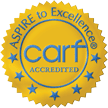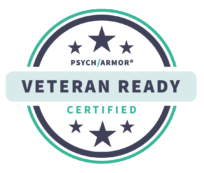National Prevention Week 2018
May 13-19th, 2018 is nationally recognized as Prevention Week. This week, designed by the Substance Abuse and Mental Health Services Association (SAMHSA) aims each year to postpone the introduction of harmful substances to children, and reduce the number of deaths and violence related to substance abuse. The dedication of the third week in May bringing awareness to substance abuse prevention has been ongoing since 2012.
Each year, a new theme is affiliated with the occasion; this year’s being “Action today. Healthier tomorrow”. Furthermore, every day has a different education concentration. The topics include underage drinking determent, prescription drug misuse interception, suicide prevention, and mental health awareness. This year’s campaign is rooted in promoting healthy living as a way to secure a bright future. A challenge has been introduced for individuals to write a letter to their future selves, #DearFutureMe. These letters are intend to encourage people to analyze the actions they participate in each day, and how those behaviors can have long lasting consequences.
The timing of National Prevention Week is not a coincidence. A large majority of adolescents begin experimenting with dangerous substances in the early summer months. The end of May is the perfect time for teachers, parents, and communities to unite and reiterate the potentially detrimental results of teens and adults alike intertwining themselves with toxic substances. During juvenescence, teenagers are searching for ways to express themselves and enlist in new experiences. It is vital for parents, teachers, and others in the community to make a wide range of healthy outlets available for those seeking channels of entertainment or expression. The sooner an intervention is implemented, and the earlier drug and alcohol education is introduced the risk of experimentation decreases substantially.
Simple actions observed as minuscule or uncomplicated can have extensive beneficial developments in the future.
Parents and other family members are the front line of defense against substance abuse. Parents set the tone for children’s reactions and attitudes towards mind-altering substances. It is important for parents to be supportive and valuable influences in their children’s lives. Remaining in correspondence, communicating calmly, demonstrating healthy relationships, setting consistent and reasonable boundaries all assist in steering children away from exploring unhealthy activities. Having a relationship where parents and their children can talk openly about daily occurrences will make tougher topics easier to address. Monitoring your children is not overbearing. Evaluating who they hang out with, that correct dosages of medication are being consumed, and that no signs of self-harm are present is vital.
The second group major influencers in the campaign to defer the introduction of illegal substances into households are teachers and other school faculty. Substance abuse education can be incorporated into a number of different courses. There is room in health, history, and finance curriculums as examples to add drug and alcohol awareness lessons. The “just say no” approach is long outdated. Students need instruction on different ways to say no. Alternatives such as making an excuse to leave, preaching your morals, and being honest have proven to be more practical ways to refuse drugs or alcohol.
Additionally, teachers should not result to scare tactics. Adolescents are passive of information that seems modified or acute and automatically tune out. Dipsomania should be taught on a large scale covering a variety of substances, not only the major ones. Students will be much more receptive to honesty and presenting classrooms with factual data and authentic portrayals of the grim reality of life addicted to drugs or alcohol. While the students themselves may not be addicted, it is highly likely they know someone who is. It is estimated that one in every ten Americans suffers from addiction whether it be alcohol or narcotics. Being an active listener helps students cope with having an addicted family member. Lending an ear goes a long way.
Finally, the immediate neighborhood plays a major role in substance abuse prevention for current and upcoming generations. Goals for the community are to be constructed for long-term success. Addiction is a costly issue emotionally and fiscally for a community. It is the responsibility of schools, clubs, government organizations, places of worship, and the local media to make resources available for those suffering from addiction. Our team of addiction recovery specialists goes into the field every day to deliver as much knowledge and as many resources they possibly can to those in need. Our representatives distribute fact sheets and other valuable information packets designed to assist in the prevention of addiction. Please contact us at (888) 223-0298 or email info@seabrook.org if you would like more information or for a tour of Seabrook.



